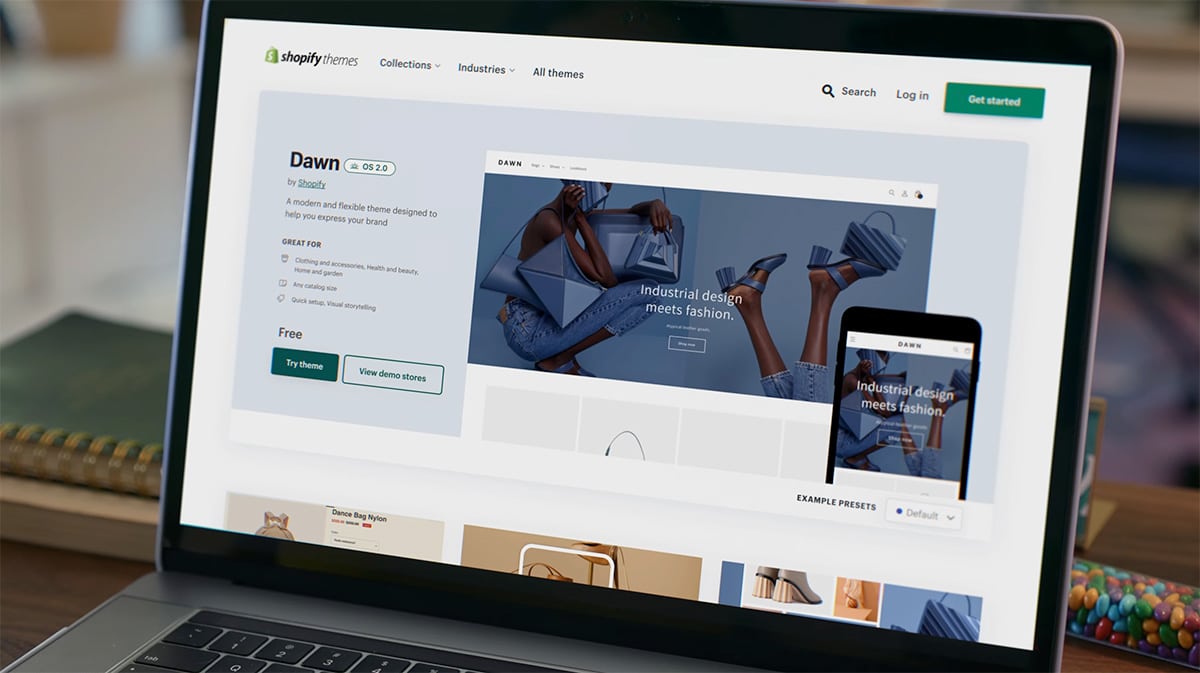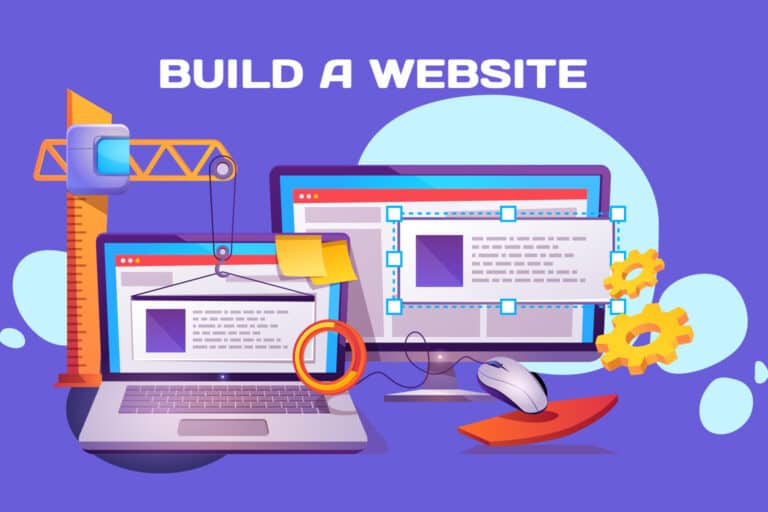Shopify, a Canadian firm, is one of the top platforms used today for creating online storefronts. Since its start, Shopify has achieved a lot and has lately grown to be a major business with a valuation of over $100 billion.
A brief history of Shopify
Three partners created Shopify in Canada in 2006 with the sole intention of selling snowboards. After a few fruitful years, the company now employs 5,000 people and has more than a million businesses using its platform to sell online.
The Economist newspaper, Lindt chocolate, the Nestlé Nescafe sales site, Kew Gardens (the Royal Botanic Gardens in Great Britain), the international divas Adele and Lady Gaga, the Heinz product stores, the BBC, and a long list of other well-known international brands are just a few of the million customers who have chosen Shopify.
The total revenue generated by all Shopify clients between 2016 and 2019 was $319 billion. The corporation assisted other companies in setting up online sales sites in 2020, amid the Corona crisis, and as a result, its market worth increased from 43 billion to 136 billion dollars in just one year (as of September 2020).
As a result, Shopify rose to become one of the top platforms for online marketplaces worldwide. Shopify comes in second place to WordPress, which has approximately 40% of the management system market, with a market share of 3.2%.
How much does it cost?
Shopify is a closed-source CMS that charges a monthly subscription, in contrast to many CMS systems that rely on open-source, like WordPress or the free Magento. Although there is a 14-day free trial, there are three price tiers beyond that:
- Basic Shopify – $29 per month (yearly subscription).
- Shopify – $79 per month (yearly subscription).
- Advanced Shopify – $299 per month (yearly subscription).
As you move up the price scale, you get more advanced features that are tailored to each price level. For instance, the basic edition lacks features found in more advanced versions, such as detailed reporting, sales in a variety of languages, or the ability to select domains based on geography.
How does it benefit us? Main features
A pre-prepared system, without getting involved with code and technical knowledge
Anyone can create, run, and promote an online store using Shopify. The system offers everything a company owner or organization may possibly need, from the name ($14 per year), storage, and designs, to clearing, marketing, and advertising possibilities.
Unlimited products
No matter the payment level we select, you are free to add as many goods as you like to the website. This contrasts with other closed source systems, which can have product quantity restrictions and/or demand extra fees.
Over 100 design templates and international payment providers
In order to immediately start selling, set up a store that looks beautiful, and receives payment. You just have to choose.
A huge support system just waiting for you
Shopify offers phone, chat, and email technical support around-the-clock 24/7. Additionally, the company’s website’s learning system provides a plethora of options:
- A comprehensive online resource center provides answers to any of your questions, from marketing to shop setup.
- Webinars, online classes, manuals, and discussion boards on a range of subjects (how to start a business, how to market and more).
- A wide range of free tools are available, including ones for picking a company name, designing a logo, using stock images, making movies, writing documents, and developing pages that are crucial for the website (such as the privacy and conditions of use).
- All the crucial terms that any business owner should understand are in the business encyclopedia.
- Working with a Shopify guru who can assist with everything is an option. Once you are an authority in your field, you may assist others by enrolling in the Partners Program.
- And much more…
Advanced connections to marketing and advertising systems
Everything that is needed to market, advertise and promote your new store – including measurement tools and statistics, so that you can monitor the performance of the store, of course. Shopify offers connections to the largest advertising systems in the world, including Google, Facebook, Instagram, Walmart, eBay, and Amazon, as well as email marketing systems (newsletters), SEO, automation, full SSL security, CDN connection and more.
Don’t have your own products but still want to open a store?
Shopify provides a comprehensive solution to assist you in selecting and selling items in your shop through a number of channels (such as dropshipping and more). A division of Shopify that was created exclusively for consumers who wish to sell products online without having to worry about product inventories, packing, or shipping.
- Affiliate program for extra income: You will typically get $58 for each paid store that is opened as a result of your suggestion. Register and get details here. (Disclosure: We are also members of the partner program, so if you start a store after referring customers to this article, we will be compensated.)
- The Shopify app, so you won’t be solely reliant on bulky desktops and can manage anything from your phone.
We could go on and on, but this paper is too short to cover all the opportunities this fantastic system offers. Here is practically the entire feature list.
How to open an Online store on Shopify
As made clear from the beginning, Shopify is for people who want to sell products and services online.
Although the system also contains a blog and articles, they are not considered standalone products; rather, they are meant to enhance the store’s website. It is preferable to use WordPress or another free platform for those who wish to create a content-only website or a catalog site without sales.
Generally speaking, you have two options for getting started: the built-in process on the website, or the 14-day trial period (using your name and email; Start in the main navigation menu). Additionally, as we previously said, you may create a dropshipping store utilizing Shopify (for customers who do not have their own products).
Those who want the long and detailed version of setting up a store will find it here.
We distilled the procedure down to 5 key components for the sake of this article:
Step 1 – Registering for a 14-day free trial
Register using the form at the top of the site or at the bottom (Start Free Trial) – start with an email and continue with a password and the name of the store. You will then be asked to fill in an address so that the system can calculate tax costs and other payments.
Step 2 – Choosing a design
You can choose a template from more than 100 ready-made templates, which you can change and design as you wish after the selection. All templates are definitely invested in terms of design, and are responsive and adapted to users on all types of devices.
It is worth noting that when you are at the beginning of the process and the store is not yet live, it is better to choose the template that looks best to you – and leave all the small changes for later stages.
Step 3 – adding product(s) and related parameters
In the website’s control panel, search for “Add a product”, and type its full name and a description as complete and detailed as possible. The more attractive and persuasive the title and description are, the more likely you are to sell. if you don’t know how to start writing – no worries, we covered this topic here.
At this stage, don’t forget to add high-quality images of the product, because the eye sees long before the mind reads. We are first influenced by the visuals and only then by other things.
For each product you upload, the following must be attended:
- Adding the product price.
- Check the Charge Taxes option (so that the system will automatically calculate taxes according to your location). If you do not mark this, the taxes will be collected from the price of the product itself and you will lose money.
- Adding a stock SKU number (not required but probably highly recommended).
- For Shopify to automatically track the quantity of goods that are available for sale, the option to add inventory availability must be set. The number of real products is then written.
- Adding the weight of the product – for automatic calculation of shipping costs according to your location.
- Adding product variations (if any) – in products with different types of color, size, type of fabric and more.
- Click on “Publish” to upload the product to the store.
At this stage it is possible and even required to determine the parameters related to SEO (Search Engine Optimization). Under “Preferences” in the store, you will find designated places for writing a title, meta description, alt text for images, URL address, and so on. It is also highly recommended to do this on the other pages of the website intended for rank promotion – product categories, sub-categories, blog/magazine content pages, and so on.
Shopify automatically generates an XML map for each site, and all you have to do is embed it in the search console of Google / Bing / your favorite search engine.
Step 4 – Choosing a domain name
Click on “Choose a domain” in the control panel menu, where you can choose whether to buy a new domain or use a domain you already own. If you don’t have a domain, you can purchase one directly from your Shopify control panel.
Step 5 – Choosing a payment provider
Click on “Settings > Payments” in the control panel menu, and you can set up one of a variety of payment providers of your choice – PayPal, Amazon, Bit Pay, Coin Base, and more.
One of the built-in options is Shopify Payments, which allows you to receive credit card payments directly and without middlemen. All you need is to connect your bank account to Shopify. When finished, click on “Publish” and that’s it!
You’re done (but actually you just started)
Congratulations, you have an Online store ready to sell. Add all the relevant products, make sure you follow all the important steps, and start selling.
This is the place to start marketing and advertising the store in the variety of advertising means available to you, whether through Shopify or independently. As in any other business – the more you invest in your new store, the higher income you will receive down the road. More about marketing can be found Here.
Good luck!







![Elementor: How to build a website easily and quickly [Beginner’s Guide]](https://masterwebpro.com/wp-content/uploads/2023/02/elementor-design-website-768x440.jpg)
